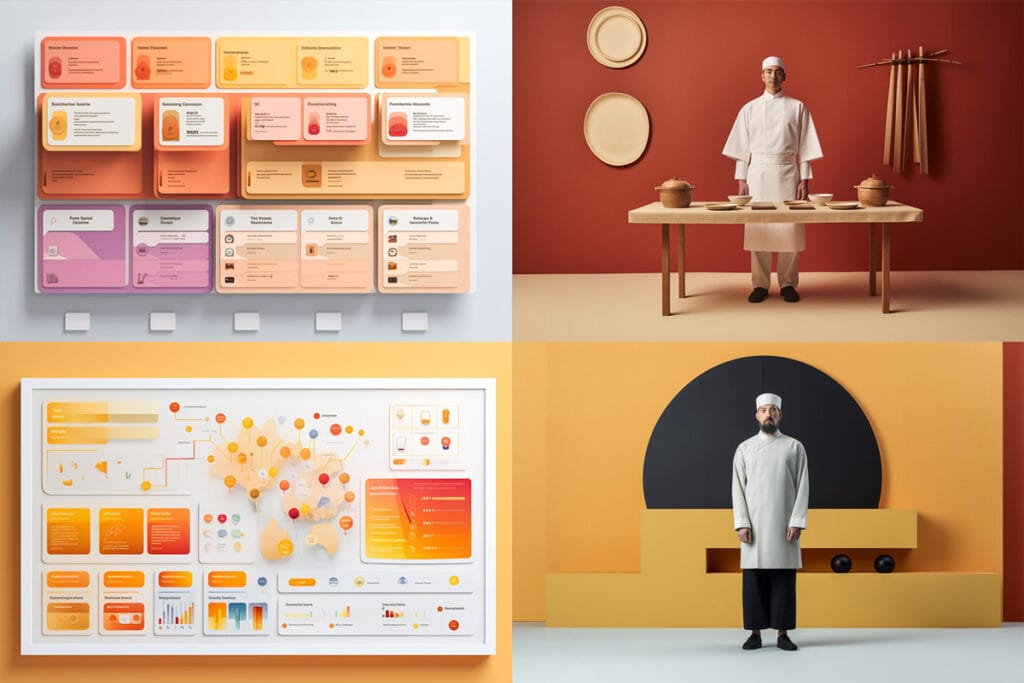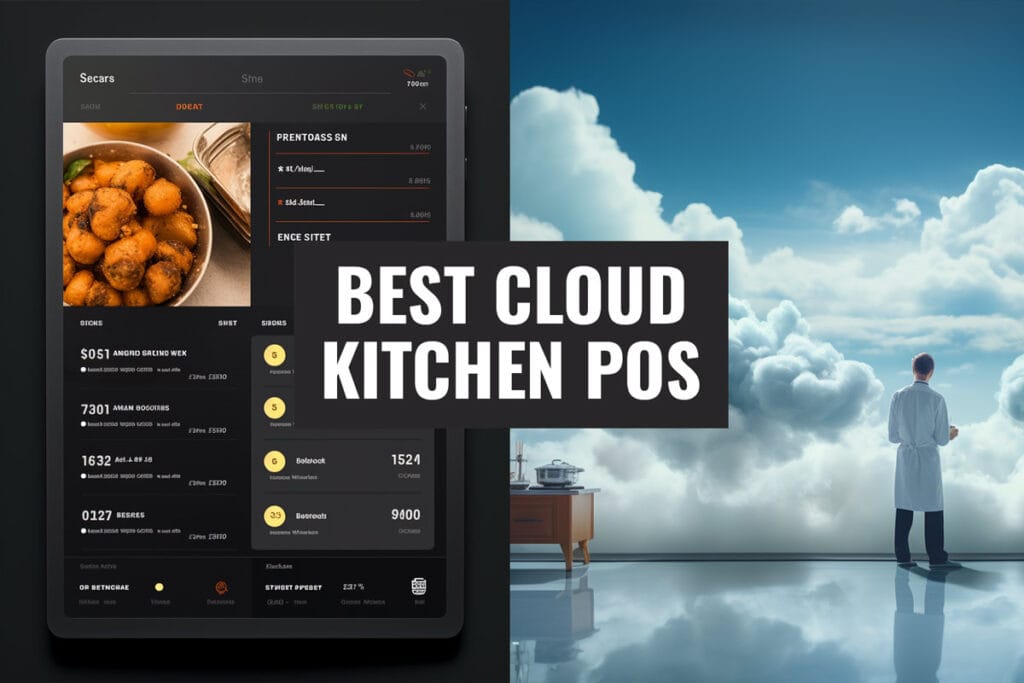Ghost kitchens, also known as cloud kitchens, are revolutionizing the restaurant industry. Without the costs of operating a dine-in establishment, ghost kitchens provide access to a variety of cuisines straight to customers’ doors.
There are several ghost kitchen business models to choose from based on your goals and existing infrastructure. Models range from renting shared space to operating a standalone facility optimized for delivery.
Whether you’re an aspiring restaurateur or an established brand looking to expand, this guide provides information to help determine the best approach for how to open a ghost kitchen.
With the right model, your ghost kitchen can successfully compete in the rapidly growing food delivery marketplace.

What are The Different Types of Ghost Kitchen Business Models?
When starting a ghost or cloud kitchen, one of the most important decisions is choosing the right business model for your goals and capabilities.
There are four main types of ghost kitchen models to consider: independent, shared kitchen, restaurant-operated, and virtual restaurant brands.
Each model has its own unique pros, cons, startup costs, and operational considerations. In the following sections, we’ll take a detailed look at how each ghost kitchen business model works so you can determine the best fit for your delivery-only dining concept.
Comparing the critical distinctions between these models will help you select an approach that aligns with your existing infrastructure, target market, and growth strategy.
1. The Independent Ghost Kitchen Model
Perhaps the purest form of a ghost kitchen is an independent delivery-only facility designed from the ground up to offer a virtual dining experience. With this model, the ghost kitchen operates as a standalone business renting its own commercial kitchen space.
Standalone Delivery-Only Facility
An independent ghost kitchen functions much like a traditional restaurant, except it is optimized specifically for digital orders and off-premise consumption. The business rents its own kitchen in an industrial/commercial location to prepare food exclusively for delivery.
Without any dine-in capabilities or storefront, the independent ghost kitchen focuses solely on maximizing its operations for food preparation, takeout packaging, and delivery logistics. They rely heavily on aggregator apps like UberEats and DoorDash for order volume.
The facility is tailored for cooking delivery-friendly menu items, assembling orders rapidly, and seamlessly handing them off to drivers. With no front-of-house or in-person interaction, they require fewer staff than traditional restaurants. Their kitchen layouts favor function over form as well.
Independent ghost kitchens must still meet the same licensing, permits, safety, and sanitation requirements as standard restaurants. However, they benefit greatly from not needing to invest in furnishings, décor, seating, etc.
Requires More Capital Investment But Full Control
The standalone model requires more upfront capital than other ghost kitchen concepts since the business must fund its own commercial kitchen space.
Renting an appropriate facility, purchasing cooking equipment, and handling permitting/licensing costs more than sharing or renting an existing kitchen.
However, owning their own dedicated ghost kitchen gives entrepreneurs complete control over location selection, kitchen layout/workflow, technology stack, POS system, branding, menus, and operations without any outside limitations.
This freedom enables fully customizing every aspect of digital ordering and delivery, making independents ideal for virtual native brands.
The independent model is well suited for ambitious owners looking to build the next major ghost kitchen brand from the ground up. Though initial costs are higher, the potential payoff of developing a successful delivery-focused concept may justify the risk and investment.
Pros and Cons
The standalone independent ghost kitchen model has some notable advantages but also important challenges to consider:
Pros
- Lower costs than traditional restaurants – Without dining rooms or storefronts, independent ghost kitchens benefit from much lower capital and operating expenses.
- Fully optimized for online food delivery – The kitchen can be designed from day one exclusively for digital orders and delivery logistics without any compromises.
- Complete control over operations – Full authority over location selection, branding, staffing, technology, menus, and partnerships.
Cons
- Must build brand awareness from scratch – As a new virtual concept, significant marketing is required to drive awareness and trial of the delivery-only brand.
- Delivery app commissions can eat into slim margins – Fees from food delivery services like UberEats, DoorDash, and others range from 15-30% per order which can be challenging with the already tight margins of ghost kitchens.
- No existing revenue streams if concept fails – For single concept independents, failure of the virtual restaurant risks the entire business as there are no other in-person revenue streams to fall back on.
The independent model provides the most customization and control which allows fully realizing the advantages of a delivery-optimized ghost kitchen. However, the lack of existing brand equity and revenue diversity also creates more risk compared to other models. Careful planning is required to give independents the best chance for sustainability and profitability.
2. The Shared Commercial Kitchen Model
Another approach to operating a ghost kitchen is utilizing shared or rented commercial kitchen spaces to prepare food for delivery. This reduces startup costs in exchange for less control.
Renting Existing Kitchen Space
With this model, an existing licensed commercial kitchen is rented out to multiple restaurant businesses. Operators pay an hourly rate or monthly fee to use the shared kitchen facilities on a time-share basis.
Sharing commercial kitchens lowers barriers to entry for aspiring ghost kitchen entrepreneurs. The communal kitchen handles permitting, equipment, safety compliance, and maintenance while tenants focus on food preparation and delivery.
Shared spaces are usually rented by the hour in blocks of time. Tenants bring their own ingredients and cook during their allotted time slots. The kitchen is then cleaned and prepped for the next restaurant.
Pros and Cons
Pros
- An affordable way to pilot ideas – Shared kitchens allow testing ghost kitchen concepts with lower risk and cost commitment versus building independent delivery-only facilities.
- Flexible terms – Tenants can rent kitchen time in weekly or monthly blocks and adjust based on order volumes.
Cons
- Less control over kitchen conditions – Must work around the kitchen’s existing layout, equipment, and schedule rather than customizing.
- Difficult to differentiate brand – When using a shared space it can be tricky proving your concept is not just reheated food.
For entrepreneurs seeking a low-risk way to validate a ghost kitchen idea before fully committing, utilizing existing shared commercial kitchens can be an ideal starting point. However, the limitations may become constraints as concepts scale.
3. Restaurant Virtual Kitchen Model
Existing restaurants can also capitalize on the ghost kitchen trend without building new facilities. By leveraging their current kitchens, traditional dining spots can add virtual brands for delivery-only menus.
Leveraging Current Brick-and-Mortar Locations
With this model, a restaurant expands into the ghost kitchen business by preparing food for online-only brands from their existing kitchen during off-peak hours.
Instead of renting separate kitchen space, they optimize use of their own underutilized capacity to offer delivery from additional virtual menus.
The core in-person dining remains unchanged. Virtual concepts and delivery are managed as a supplementary revenue stream leveraging existing infrastructure when not serving on-premise patrons.
Pros and Cons
Pros
- Leverage established brand awareness and reputation – Virtual concepts build off the trust and authority of the main restaurant brand.
- Manage delivery alongside dine-in service – Core restaurant operations remain undisturbed and supplemented by ghost kitchen sales.
Cons
- Potential to cannibalize core revenue – Promoting delivery could distract from or devalue the traditional in-person dining experience.
Adding virtual kitchens to current locations allows restaurants to test delivery menus with minimal added costs and risks. But managing multiple brands from one kitchen does add complexities.
4. Leased Kitchen Pod Model
For entrepreneurs seeking the quickest path to launching a ghost kitchen, leasing a ready-made modular kitchen “pod” can accelerate the process.
Plug-and-Play Modular Kitchens
Providers like CloudKitchens and Kitchen United offer complete kitchen pods that can be leased on flexible terms. These turnkey units come fully equipped and compliant for cooking and delivery operations.
Kitchen pods allow operators to instantly set up ghost kitchens in areas with high delivery order volumes without lengthy buildouts. Units can be leased for as little as 4-6 months to test concepts.
The kitchen pods are standardized but customizable with different cooking equipment, ventilation, storage, etc. Leasing companies handle maintenance, sanitation, and managing 3rd party delivery integration.
Pros and Cons
Pros
- Speed and simplicity of getting started – Leased pods allow ghost kitchens to launch in weeks rather than months.
- Built-in infrastructure – Units come fully equipped with all necessary kitchen gear and tech.
Cons
- Less customization and control – Must work within pre-configured pod kitchen layouts and equipment.
- Must renew short-term leases – Keeping the location depends on negotiating extensions of typically 6-12 month terms.
For entrepreneurs focused on testing concepts quickly, leased kitchen pods offer fast deployments. However, lack of ownership and customization may become limiting factors long-term.
5. Hybrid Hub-and-Spoke Model
Some ghost kitchen operators use a hybrid model combining centralized commissary kitchens with satellite locations. This allows consolidating operations while still locating close to customers.
Central Commissary Kitchen Supporting Satellites
The hybrid “hub-and-spoke” model utilizes a large central production kitchen to prepare high-volume menu items, sauces, etc. These are then distributed to multiple smaller ghost kitchen depots situated in different neighborhoods.
The satellite kitchens focus on quick assembly and customization of orders before handoff to delivery drivers. They benefit from the economies of scale of the central commissary while still locating near demand pockets.
Pros and Cons
Pros
- Cost efficiencies through consolidating facilities – Central kitchen allows high-volume bulk production to lower costs.
- Maintain proximity through satellites – Smaller spokes place kitchens close by to customers for fast delivery.
Cons
- Complex operations connecting multiple sites – Logistics coordination and inventory management are more challenging.
For large ghost kitchen operators, the hub-and-spoke model balances cost efficiency with customer convenience. However, the split infrastructure also introduces operational complexities. Careful planning is required to synchronize production and distribution.

Which Ghost Kitchen Model is Right For You?
Choosing the best ghost kitchen approach requires carefully analyzing your specific business goals, budget, and capabilities against the pros and cons of each model.
Key factors to consider include:
- Available Capital – Independent facilities require more upfront investment versus leveraging existing or shared kitchens.
- Concept Complexity – Shared kitchens may not suit complex menus needing specialized equipment.
- Brand Recognition – Leveraging an established restaurant’s reputation can help launch virtual concepts.
- Flexibility – Short-term leases allow testing ideas but limit long-term control.
- Growth Plans – Will you scale to multiple locations or remain small?
- Startup Timeline – Some models support launching in weeks vs. months.
- Level of Control – More authority over branding and operations with independent buildouts.
Weigh your resources against anticipated operational needs. Piloting in shared kitchens offers lower-risk validation while independent ownership supports unlimited growth potential.
The optimal model aligns with your capabilities today but also the vision for where you aim to be long-term.
Key considerations include existing infrastructure, location strategy, target customers, staffing, growth trajectory, partnership options, regulations, technology needs, and order volume potential.
Evaluating these elements against your concept, menu, and business goals can help determine the most advantageous ghost kitchen model for your needs.
The Future of Ghost Kitchen Models
The virtual restaurant industry is still in its early stages and will continue to evolve new approaches, technologies, and business models. As ghost kitchens become more mainstream, we can expect to see:
More Refined Segmentation – Currently there are just a handful of main ghost kitchen models. In the future, we’ll likely see wider segmentation with models tailored for specific business goals, facility types, menu offerings, and customer targets.
Improved Customer Experience – Brands will aim to provide a frictionless ordering experience through intuitive apps and websites. Customization options during checkout will help match delivery experiences to individual brand positioning and themes.
Next-Generation Kitchen Technology – Emerging technologies like automation, IoT sensors, and predictive analytics will help ghost kitchens enhance operations, control costs, reduce waste, and seamlessly manage multiple virtual restaurants.

Read more: Best Cloud & Ghost Kitchen POS Systems
Supply Chain Integration – Tighter coordination with suppliers around ingredient delivery schedules, volumes, and menus will further optimize stocking, preparation, and waste reduction.
Advanced Data Analytics – Granular customer data and order information will enable brands to continuously fine-tune virtual menus, optimize kitchen locations, provide personalized recommendations, and tailor offerings to local tastes.
Mainstream Acceptance – As consumers increasingly embrace delivery, virtual restaurants will become a commonplace option alongside traditional dine-in establishments.
The next decade will see significant evolution transforming ghost kitchens into a mature industry. Brands that leverage emerging innovations while staying laser-focused on customer needs will define the future of virtual dining.
Conclusion
When starting a ghost kitchen, there are several models to choose from, each with unique pros, cons, costs, and operational considerations. While no single approach is universally better, evaluating options based on your specific goals, existing infrastructure, and appetite for complexity is key.
Certain models allow leveraging current restaurant facilities to minimize costs and speed time-to-market. But ultimately, strong unit economics through customer appeal and excellent operations are crucial, whether virtual or brick-and-mortar.
Looking ahead, restaurant technology will enable greater flexibility and customization while data and customer insights help drive better decision-making as virtual brands mature. Partnerships between brands will also likely increase in importance.
Virtual kitchens are reshaping the restaurant landscape, and delivery-only brands may soon become the norm, especially for new concepts. While regulatory and staffing challenges exist, ghost kitchens provide a way to nimbly test ideas for the emerging on-demand food marketplace.
Carefully weighing different models against your capabilities and strategic goals is vital for successfully navigating this evolving industry. The accelerated adoption of delivery provides opportunities but also requires adaptation.



